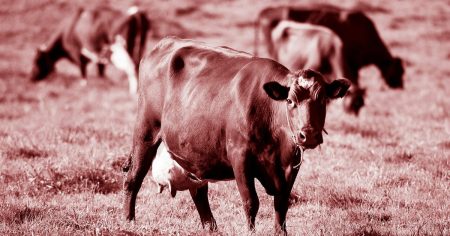The global biodiversity framework, adopted at the COP15 UN Biodiversity Conference in Montreal, sets ambitious targets for nations to protect and restore nature by 2030. Sweden, like other signatory nations, is now tasked with integrating these targets into its national strategies and policies. However, achieving these goals will require significant changes to current practices, particularly in forestry, agriculture, and wetland management. Preliminary analyses suggest that Sweden may need to implement a suite of potentially impactful measures, including alterations to clear-cutting practices, large-scale wetland restoration, and a substantial increase in the number of cattle grazing on natural pastures. These measures, while potentially beneficial for biodiversity, could also have significant economic and social ramifications, sparking debate and discussion about the optimal path forward. Concerns have been raised that the current government’s approach may prioritize minimizing disruption over maximizing biodiversity gains, potentially undermining the nation’s ability to meet its international commitments.
One of the key areas identified for potential change is forestry. Clear-cutting, a prevalent forestry practice in Sweden, has been criticized for its negative impacts on biodiversity. While efficient for timber production, it creates large, homogenous stands of trees that lack the structural complexity and species diversity of natural forests. To mitigate these impacts, the biodiversity framework may necessitate modifications to clear-cutting practices, such as reducing the size of clear-cuts, increasing the retention of old-growth trees and deadwood, and promoting more diverse forest regeneration. These changes, however, could potentially impact timber yields and the profitability of the forestry sector, requiring careful consideration of economic and ecological trade-offs. Alternative forestry approaches, such as continuous cover forestry, may need to be explored and implemented on a larger scale to achieve both biodiversity goals and sustainable timber production.
Another significant area of focus is wetland restoration. Sweden has lost a considerable portion of its wetlands over the past centuries due to drainage for agriculture and forestry. Wetlands play a crucial role in biodiversity, providing habitat for a wide range of species and offering vital ecosystem services, such as water purification and flood mitigation. Restoring 150,000 hectares of wetlands, as suggested, would represent a substantial undertaking, requiring significant investment and potentially impacting current land use practices. Identifying suitable areas for restoration, addressing land ownership issues, and developing effective restoration strategies will be critical for the success of this initiative. The potential benefits, however, are substantial, including enhanced biodiversity, improved water quality, and increased resilience to climate change impacts.
The proposed increase in cattle grazing on natural pastures is a more controversial aspect of the potential changes. While proponents argue that grazing can promote biodiversity by creating a mosaic of habitats and preventing the encroachment of shrubs and trees, critics express concerns about potential negative impacts on sensitive plant species and the risk of overgrazing. Furthermore, increasing the number of grazing cattle could contribute to greenhouse gas emissions, raising questions about the overall climate impact of this measure. Careful management practices, such as rotational grazing and stocking density control, would be essential to ensure that grazing benefits biodiversity without causing unintended negative consequences. Furthermore, the integration of grazing with other conservation measures, such as controlled burning and targeted removal of invasive species, could maximize the positive impacts on biodiversity.
The implementation of these and other measures required to meet the biodiversity framework targets will require a significant shift in policy and practice. This will necessitate open dialogue and collaboration between government agencies, landowners, industry stakeholders, and researchers. Developing effective monitoring programs to track progress towards biodiversity goals and assess the impacts of different management interventions will be crucial. Furthermore, ensuring adequate funding for research, restoration efforts, and sustainable land management practices will be essential for achieving long-term success. The challenge lies in finding a balance between economic interests and ecological imperatives, developing solutions that benefit both biodiversity and human well-being.
Concerns have been raised regarding the Swedish government’s apparent reluctance to fully embrace the ambitious targets set by the global biodiversity framework. Critics argue that a focus on minimizing change and prioritizing short-term economic gains over long-term ecological sustainability could undermine Sweden’s ability to meet its international commitments and contribute to the global effort to halt biodiversity loss. A more proactive and ambitious approach, incorporating scientific expertise and stakeholder engagement, is needed to ensure that Sweden effectively addresses the biodiversity crisis and contributes to a sustainable future. The global biodiversity framework offers a roadmap for action, but its success hinges on the willingness of individual nations to translate these global goals into concrete national policies and practices. Sweden, with its rich natural heritage, has a responsibility to play a leading role in this global endeavor.














